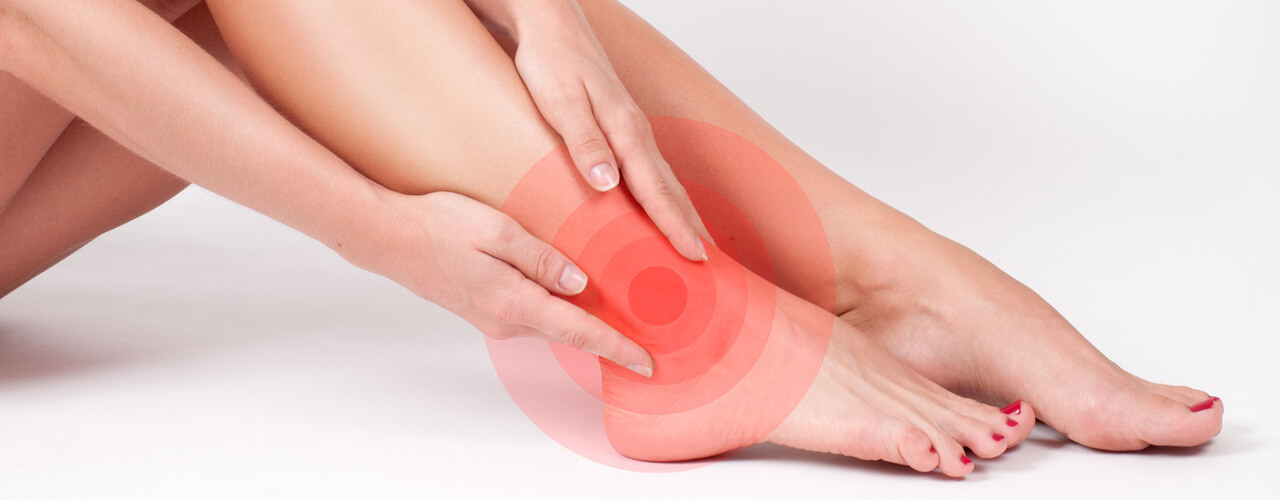
Sprained Ankle
It’s a tear in the tissues (called ligaments) that hold your ankle bones together. It often happens when your foot rolls sideways. Your ankle may bruise and swell. You might not be able to put weight on it. RICE is the best way to treat it:
- Rest
- Ice for 20 minutes at a time
- Compress with an elastic bandage
- Elevate your ankle -- lift it above your heart
A light sprain will get better in a few days. If yours is worse, the doctor may suggest a short cast or walking boot, followed by physical therapy.
Rheumatoid Arthritis
Your immune system normally fights off germs. Sometimes it attacks your joints by mistake. Doctors call this rheumatoid arthritis. It usually affects the same joint on both sides of your body. If you have it, both ankles are likely to hurt. Pain, swelling, and stiffness often start in the toes and front of your foot and move slowly back to the ankle. Exercise, including physical therapy, can help. Your doctor also may prescribe special shoes or inserts to relieve pain or drugs to ease the swelling.
Osteoarthritis
A joint is where two bones meet. Cartilage covers the end of each bone to provide a cushion. Over time, it wears off. When it’s gone, the bones rub directly against each other. This can lead to pain, stiffness, and loss of motion. Your doctor may suggest anti-inflammatory drugs and steroid shots reduce swelling, braces to help your ankle move less, and physical therapy to teach you strengthening exercises. You might need surgery.
Achilles Tendinitis
A heavy or sudden strain can cause tiny tears in the Achilles tendon, which connects your calf muscles to your heel. The back of your ankle may swell or feel tender and warm just above your heel. You might notice it most in the morning or after exercise. Anti-inflammatory drugs can ease the pain, but rest is key to healing. Stretching and heel lifts may help but talk to your doctor or physical therapist first. If scar tissue causes problems later on, you might need surgery.
Achilles Tendinosis
This problem results from tissue breakdown due to overuse. It usually starts slowly and gets worse over time. You could have pain or a bump where the tendon at the back of your leg meets your heel. Sometimes it affects the middle of the tendon -- you might notice a bump there, too. Rest and over-the-counter drugs can ease swelling and pain. Special shoes, inserts, or braces can lessen stress on the tendon. Physical therapy can help, too.
Chronic Lateral Ankle Pain
There are many possible causes for ongoing pain on the outside of your ankle. It’s most likely because a ligament didn’t heal properly after a sprain and remains weak. This makes the entire joint less stable and leads to more injury and pain. Treatment depends on the cause. It will likely involve rest and special exercises to strengthen weak tissues.
Bursitis
Your ankle has two fluid-filled sacs, or bursa, that cushion the space between the tendons and bones. They can get inflamed from arthritis, overuse, high-heeled shoes, recent footwear changes, or starting workouts again after time off. Your ankle may feel stiff, tender, warm, and swollen. The best treatment is RICE: rest, ice, compression and elevation. Take anti-inflammatory drugs to ease the pain and swelling. Stretches and special exercises can prevent future problems.
Osteochondral Lesions of the Talus (OLT)
A sudden injury like a sprain can damage cartilage on your talus (heel bone) or cause fractures, blisters or sores in the bone underneath. You might notice a catch in your ankle, or it could lock up or still hurt months after a treated injury, which could be an OLT. Treatment depends on the type, but you may wear a cast to keep your ankle still and use crutches to keep your weight off it. Your physical therapist will add exercises slowly.
Reactive Arthritis
This type usually follows an infection in your GI or urinary tract. Ankles and knees are among the first places you may feel it. Your doctor will treat the infection with antibiotics. There’s no cure for arthritis, but anti-inflammatory drugs can help with pain and swelling. Exercise will keep your joints flexible. Arthritis should go away in a few months.
Precision Pain Care and Rehabilitation has two convenient locations in Richmond Hill – Queens and New Hyde Park – Long Island. Call the Richmond Hill office at (718) 215-1888, or (516) 419-4480 for Long Island office, to arrange an appointment with our Interventional Pain Management Specialist, Dr. Jeffrey Chacko.













